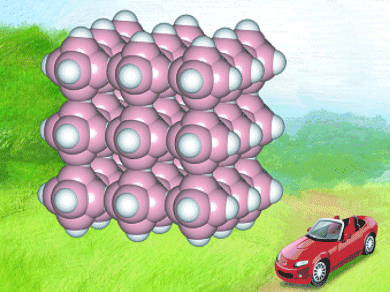A metal-organic framework (MOF) with accessible iron(II) sites can bind hydrogen gas more strongly at room temperatures than other reported MOFs, according to chemists in Berkeley. The team used a high-throughput screening method to search for the optimum synthetic reaction conditions for their MOF. The material could fill a currently vacant niche for safe hydrogen storage materials for vehicle fuel cells. Its developers also point out that the same material might also be used to absorb carbon dioxide, perhaps acting as a “scrubber” for electricity power stations that run on fossil fuels.
- Hydrogen storage and carbon dioxide capture in an iron-based sodalite-type metal-organic framework (Fe-BTT) discovered via high-throughput methods
K. Sumida, S. Horike, S. S. Kaye, Z. R. Herm, W. L. Queen, C. M. Brown, F. Grandjean, G. J. Long, A. Dailly, J. R. Long,
Chem. Sci. 2010, 1.
DOI: 10.1039/c0sc00179a




